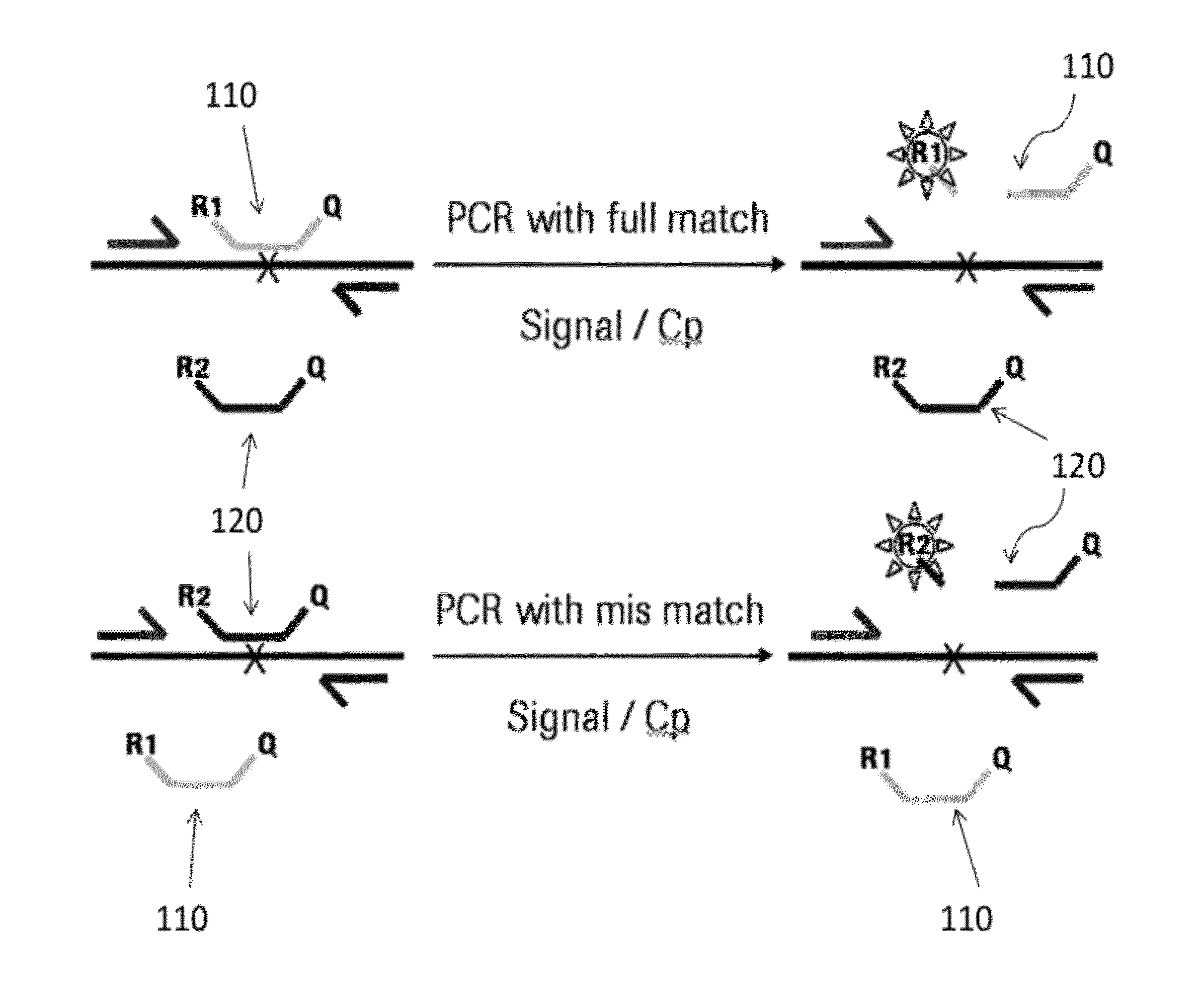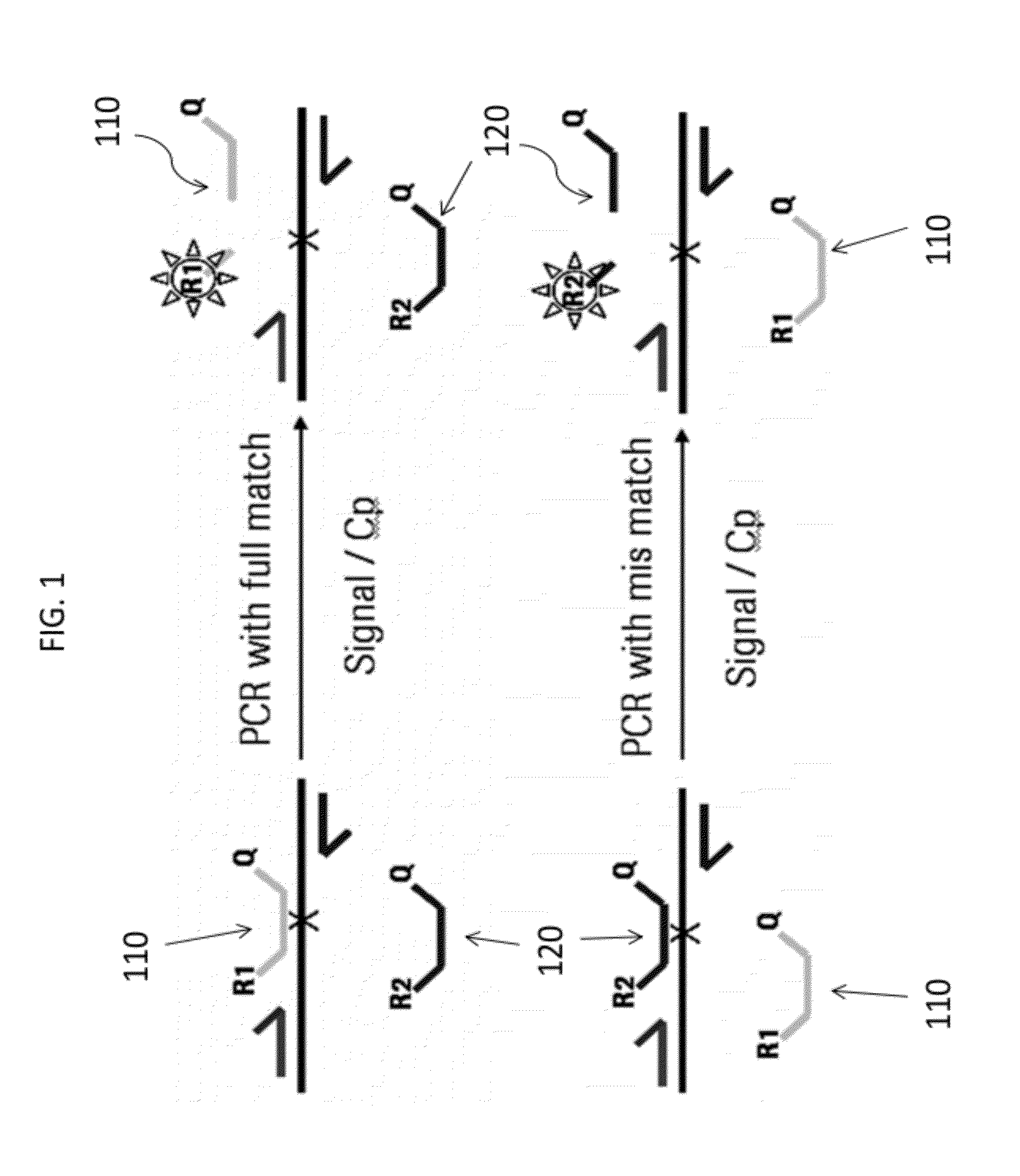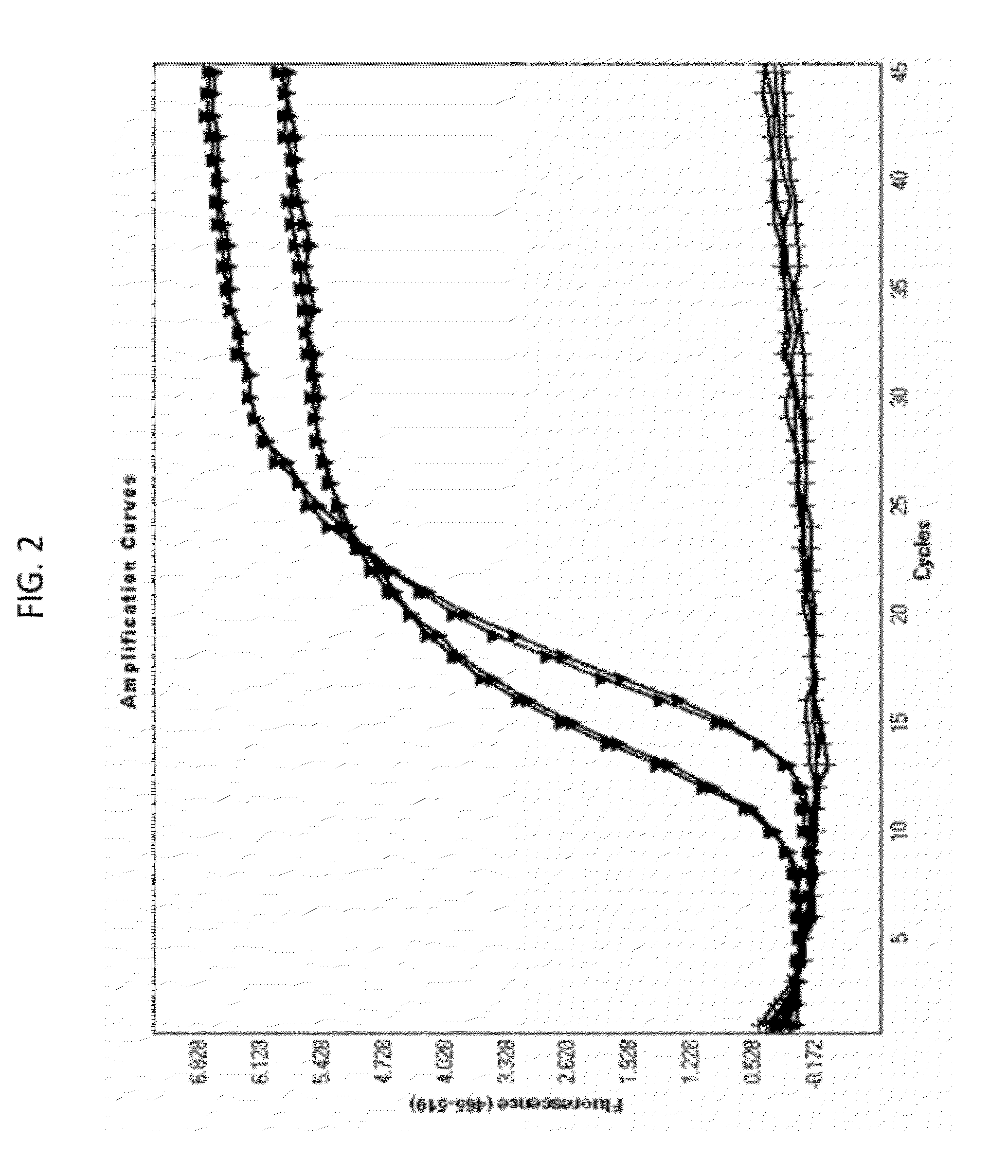Type of universal probe for the detection of genomic variants
a universal probe and genomic variant technology, applied in the field of detecting genomic variants, can solve the problems of multiple highly specific probes, high the analysis of numerous potential polymorphism loci in one experiment is highly time-consuming, laborious and costly,
- Summary
- Abstract
- Description
- Claims
- Application Information
AI Technical Summary
Benefits of technology
Problems solved by technology
Method used
Image
Examples
example 1
[0346]The experiment demonstrates the discriminating power of a full match probe in comparison to the mis-match probe, as disclosed herein, where the full match and the mis-match probe have the same nucleic acid sequence except one nucleic base in the middle of the probe sequence. (FIG. 1) The primer pairs are for both probes and produce the same amplicon during PCR amplification. Because both probes have the same reporter dye, the PCR experiment was performed in different wells in mono color mode only. Further, in order to demonstrate that the PCR performance is sufficient even with different sample concentrations, the PCR was performed with two different dilutions of cDNA target (assayed in duplicate for each concentration). The target parameter in example 1 is 18S.
[0347]With reference to FIG. 1, first probe 110 (having reporter 1 indicated as R1) is shown hybridized and cleaved in the presence of a full match (to the wild type sequence) in a sample allowing R1 to produce a signal...
example 2
[0363]The experiment demonstrates the discriminating power of a full match probe in comparison to a mis match probe (as depicted in FIG. 1), where the full match and the mis match probe have the same nucleic acid sequence except one nucleic base near the middle of the probe sequence. The primer pairs are for both probes, and produce the same amplicon during PCR amplification. Because both probes have the same reporter dye the PCR experiment was performed in different wells in mono color mode only. Further, in order to demonstrate that the PCR performance is sufficient even with different sample concentrations the PCR was performed with two different dilutions of cDNA target (assayed in duplicate at each concentration). The difference between example 2 compared to example 1 is the target parameters (the target parameter in example 2 is MNAT1).
[0364]With reference to FIG. 3, the PCR reactions with a probe having a full match sequence to the target sequence (exemplified as first probe ...
example 3
[0378]The experiment was carried out to demonstrate the discriminating power of the full match probe in comparison to the mis match probe, where the full match and the mis match probe have the same nucleic acid sequence except one nucleic base in the middle of the probe sequence. The primer pairs are for both probes and produce the same amplicon during PCR amplification. Because, in this example, both probes have different reporter dyes the PCR experiment was performed in the same well in dual color mode. To demonstrate the sufficiency of the PCR performance (even with different sample concentrations) the PCR was performed with two different dilutions of cDNA as target (in technical duplicates of each concentration). The difference of example 3 compared to example 1 is the PCR mode mono color to dual color (the parameter in example 3 is 18S).
[0379]With reference to FIG. 4, the PCR reactions with a probe having a full match sequence to the target sequence (exemplified as first probe ...
PUM
| Property | Measurement | Unit |
|---|---|---|
| Magnetic field | aaaaa | aaaaa |
| Composition | aaaaa | aaaaa |
| Emission spectrum | aaaaa | aaaaa |
Abstract
Description
Claims
Application Information
 Login to View More
Login to View More - R&D
- Intellectual Property
- Life Sciences
- Materials
- Tech Scout
- Unparalleled Data Quality
- Higher Quality Content
- 60% Fewer Hallucinations
Browse by: Latest US Patents, China's latest patents, Technical Efficacy Thesaurus, Application Domain, Technology Topic, Popular Technical Reports.
© 2025 PatSnap. All rights reserved.Legal|Privacy policy|Modern Slavery Act Transparency Statement|Sitemap|About US| Contact US: help@patsnap.com



